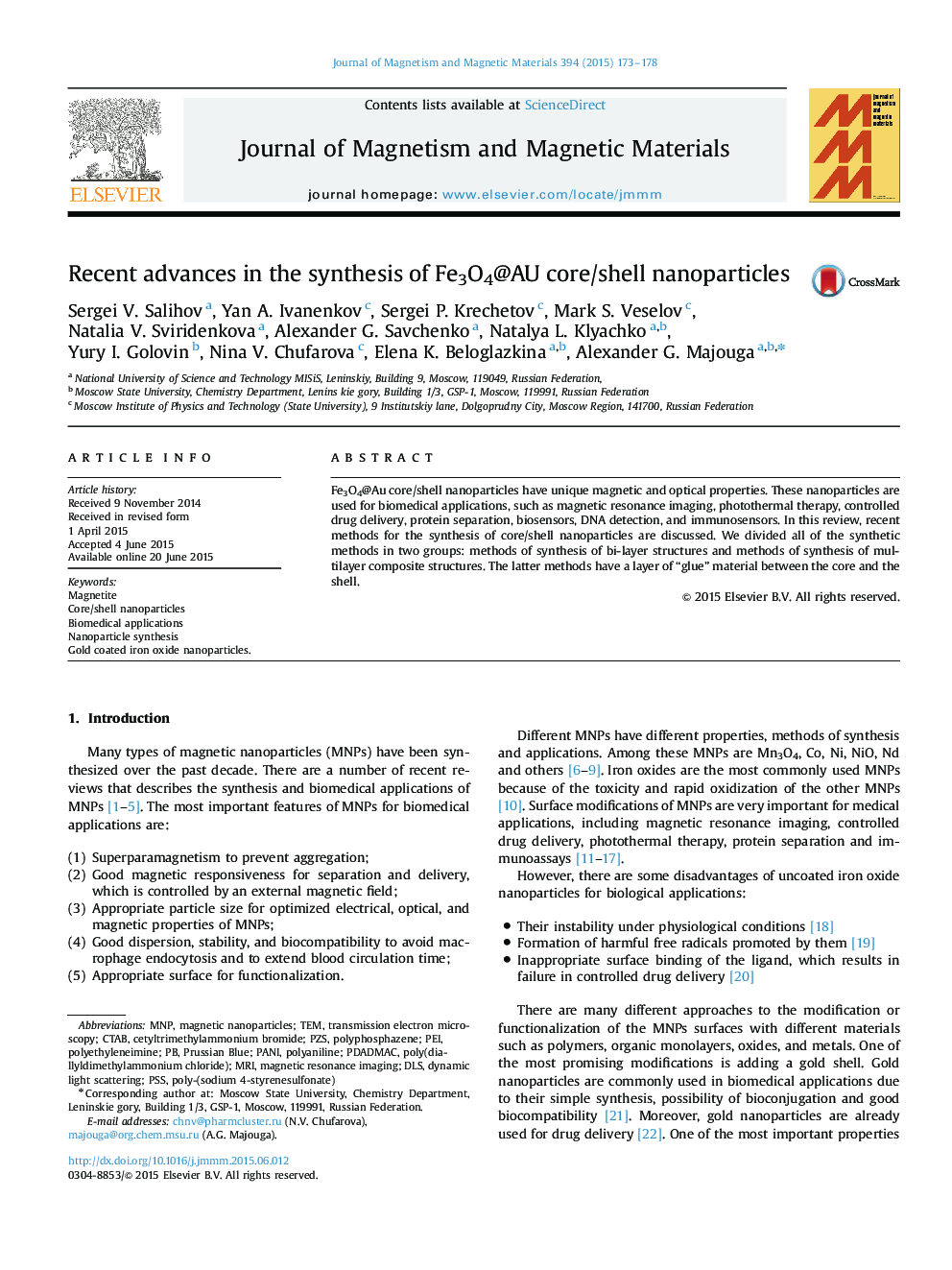| Article ID | Journal | Published Year | Pages | File Type |
|---|---|---|---|---|
| 1798978 | Journal of Magnetism and Magnetic Materials | 2015 | 6 Pages |
•Fe3O4 nanoparticles are promising for biomedical applications but have some disadvantages.•Covering Fe3O4 nanoparticles with Au shell leads to better stability and biocompatibility.•Core/shell nanoparticles are widely used for biomedical applications.•There are two types of Fe3O4@Au core/shell nanoparticles structures: bi-layer and multilayer composite.•Different synthetic methods enable production of nanoparticles of different sizes.
Fe3O4@Au core/shell nanoparticles have unique magnetic and optical properties. These nanoparticles are used for biomedical applications, such as magnetic resonance imaging, photothermal therapy, controlled drug delivery, protein separation, biosensors, DNA detection, and immunosensors. In this review, recent methods for the synthesis of core/shell nanoparticles are discussed. We divided all of the synthetic methods in two groups: methods of synthesis of bi-layer structures and methods of synthesis of multilayer composite structures. The latter methods have a layer of “glue” material between the core and the shell.
